Abstract
Environmental use of genetically engineered microorganisms has raised concerns about potential ecological impact. This research evaluated the survival, competitiveness, and effects upon selected bacterial genera of wild-type and genetically engineered Erwinia carotovora subsp. carotovora to ascertain if differences between the wild-type and genetically engineered strains exist in soil microcosms. The engineered strain contained a chromosomally inserted gene for kanamycin resistance. No significant differences in survival in nonsterile soil over 2 months or in the competitiveness of either strain were observed when the strains were added concurrently to microcosms. For reasons that remain unclear, the engineered strain did survive longer in sterilized soil. The effects of both strains on total bacteria, Pseudomonas and Staphylococcus strains, and actinomycetes were observed. While some apparent differences were observed, they were not statistically significant. A better understanding of the microbial ecology of engineered bacteria, especially pathogens genetically altered for use as biological control agents, is essential before commercial applications can be accomplished.
Full text
PDF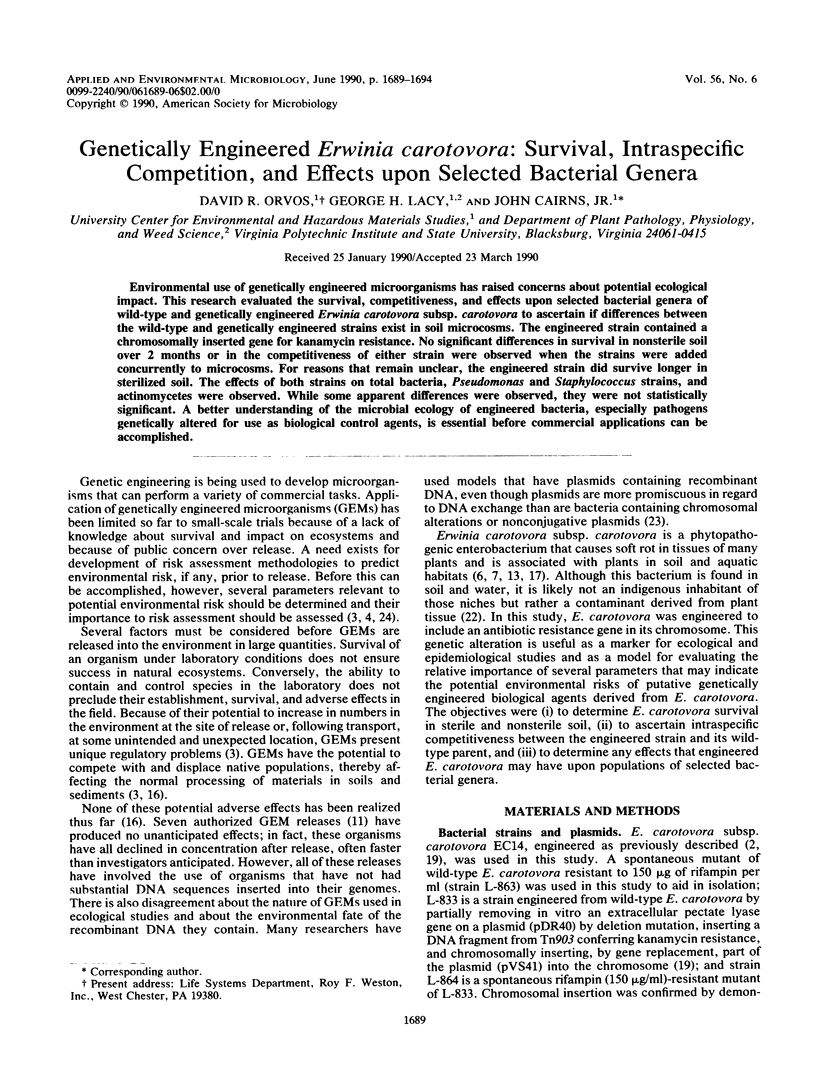
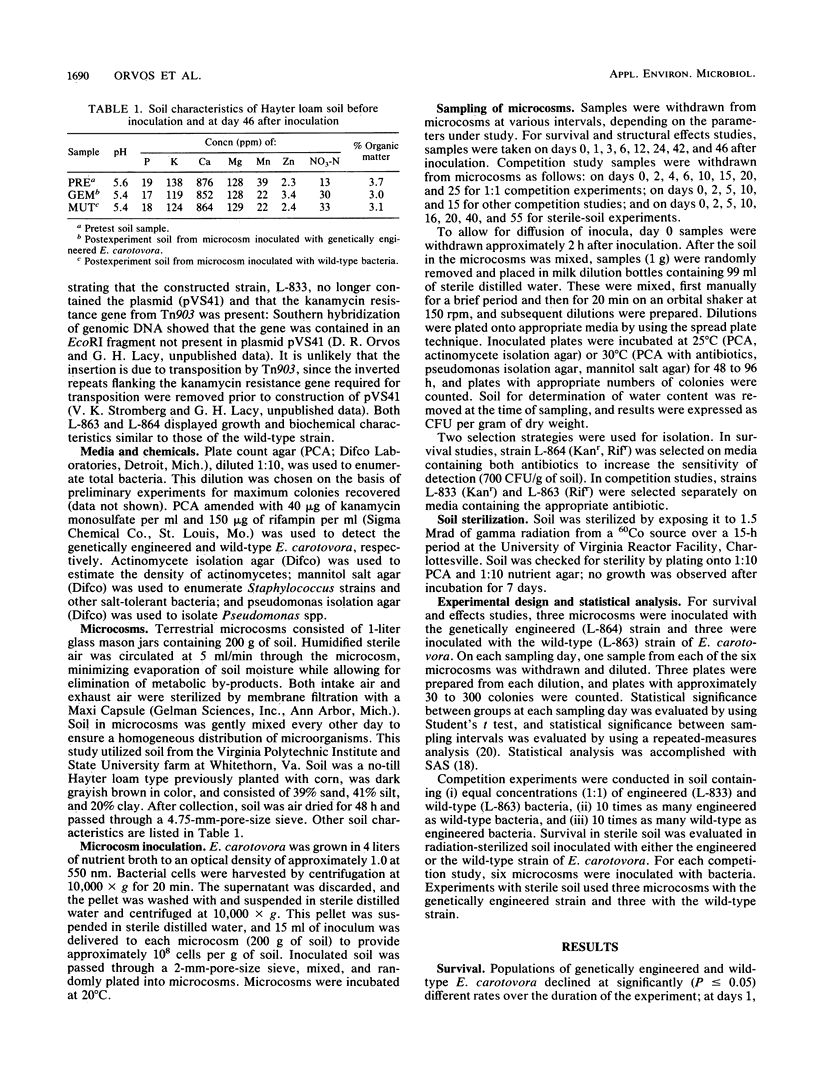
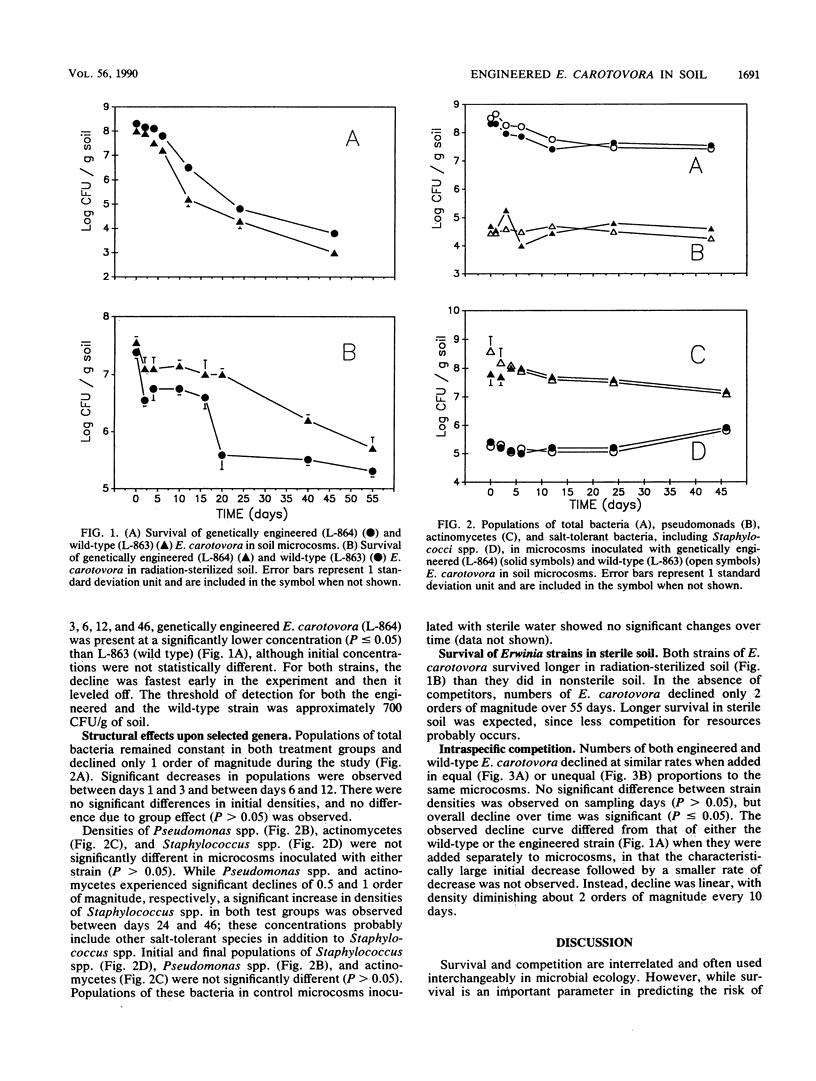
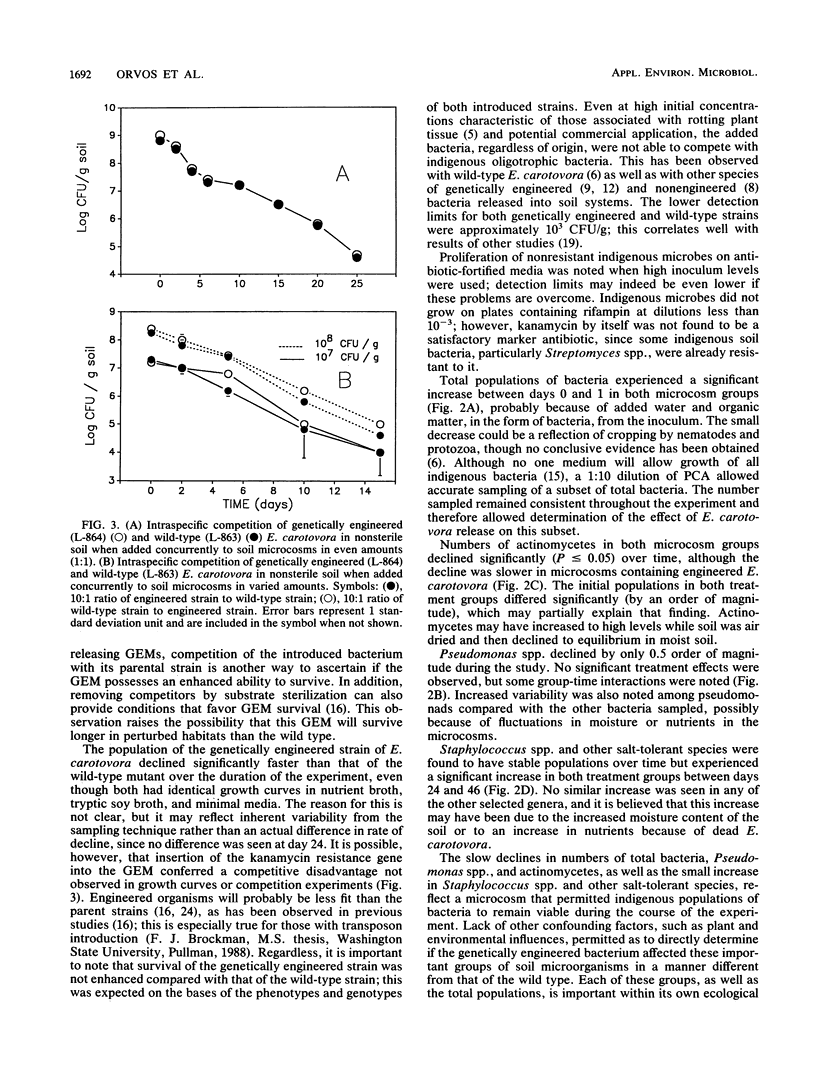
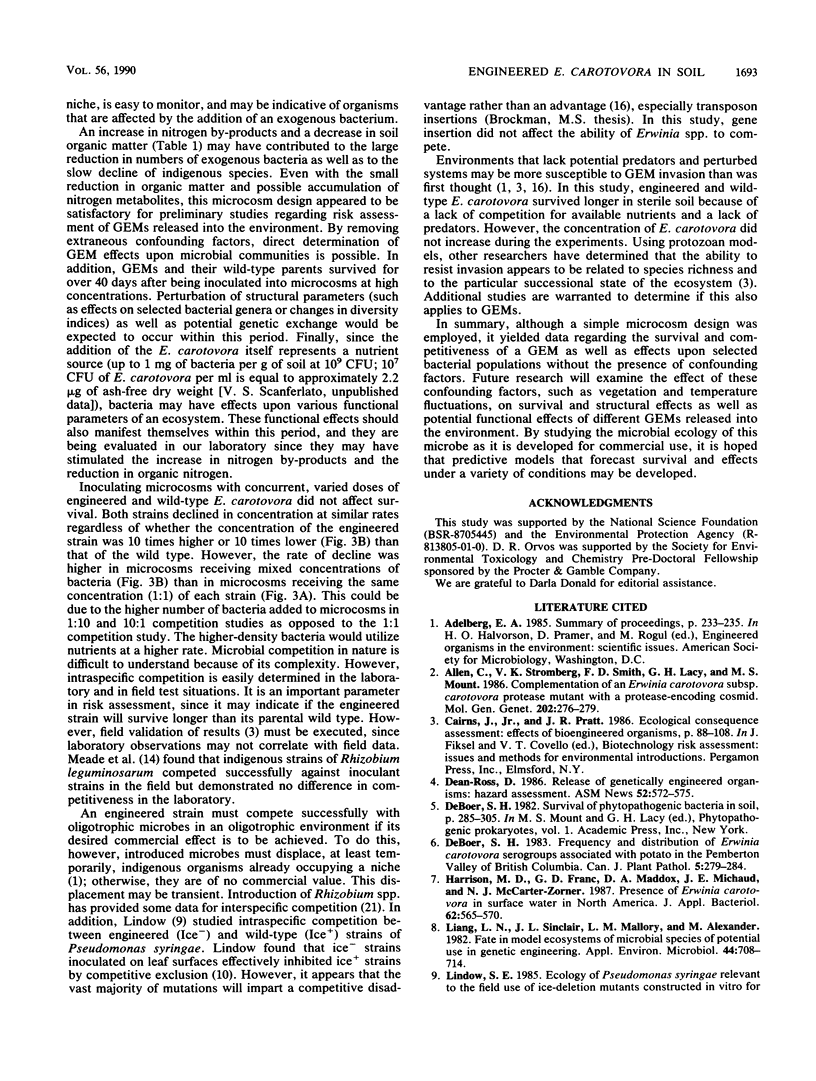
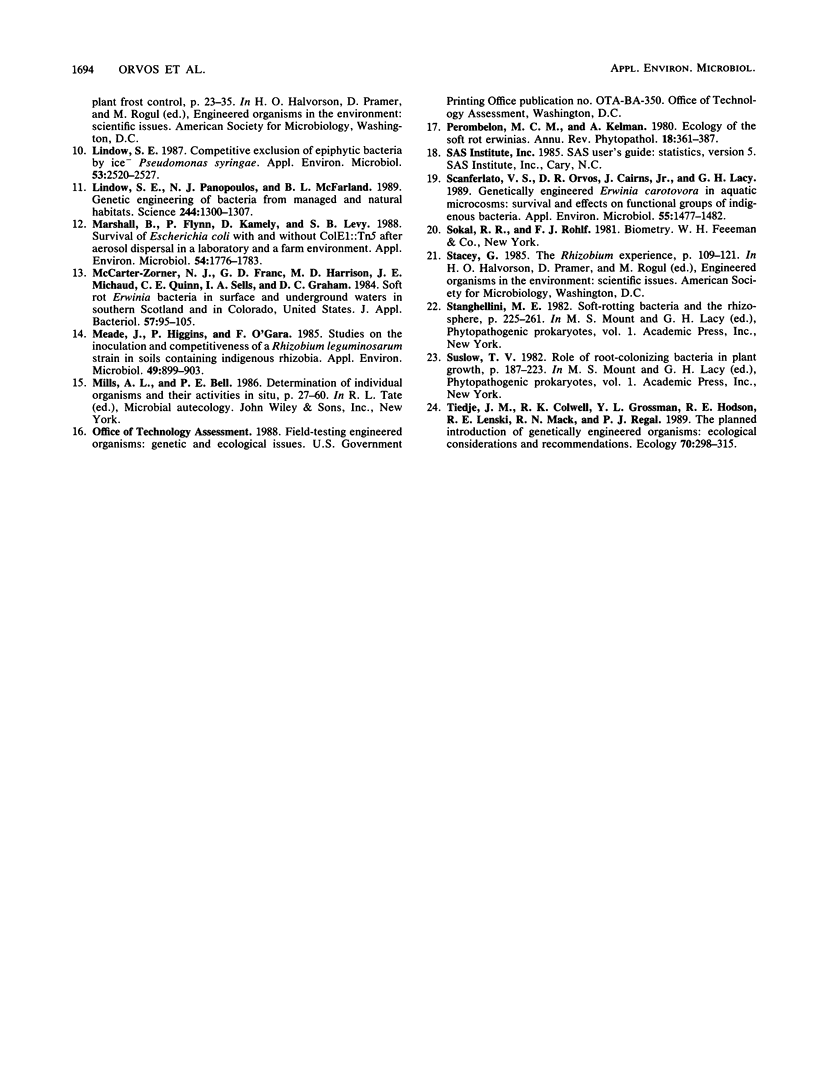
Selected References
These references are in PubMed. This may not be the complete list of references from this article.
- Liang L. N., Sinclair J. L., Mallory L. M., Alexander M. Fate in model ecosystems of microbial species of potential use in genetic engineering. Appl Environ Microbiol. 1982 Sep;44(3):708–714. doi: 10.1128/aem.44.3.708-714.1982. [DOI] [PMC free article] [PubMed] [Google Scholar]
- Lindow S. E. Competitive Exclusion of Epiphytic Bacteria by IcePseudomonas syringae Mutants. Appl Environ Microbiol. 1987 Oct;53(10):2520–2527. doi: 10.1128/aem.53.10.2520-2527.1987. [DOI] [PMC free article] [PubMed] [Google Scholar]
- Lindow S. E., Panopoulos N. J., McFarland B. L. Genetic engineering of bacteria from managed and natural habitats. Science. 1989 Jun 16;244(4910):1300–1307. doi: 10.1126/science.2660261. [DOI] [PubMed] [Google Scholar]
- Marshall B., Flynn P., Kamely D., Levy S. B. Survival of Escherichia coli with and without ColE1::Tn5 after aerosol dispersal in a laboratory and a farm environment. Appl Environ Microbiol. 1988 Jul;54(7):1776–1783. doi: 10.1128/aem.54.7.1776-1783.1988. [DOI] [PMC free article] [PubMed] [Google Scholar]
- Meade J., Higgins P., O'gara F. Studies on the Inoculation and Competitiveness of a Rhizobium leguminosarum Strain in Soils Containing Indigenous Rhizobia. Appl Environ Microbiol. 1985 Apr;49(4):899–903. doi: 10.1128/aem.49.4.899-903.1985. [DOI] [PMC free article] [PubMed] [Google Scholar]
- Scanferlato V. S., Orvos D. R., Cairns J., Lacy G. H. Genetically Engineered Erwinia carotovora in Aquatic Microcosms: Survival and Effects on Functional Groups of Indigenous Bacteria. Appl Environ Microbiol. 1989 Jun;55(6):1477–1482. doi: 10.1128/aem.55.6.1477-1482.1989. [DOI] [PMC free article] [PubMed] [Google Scholar]


